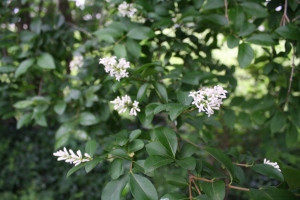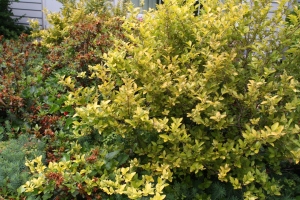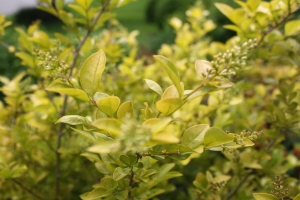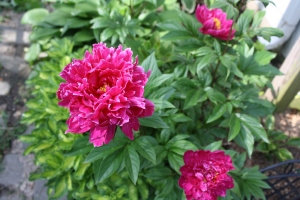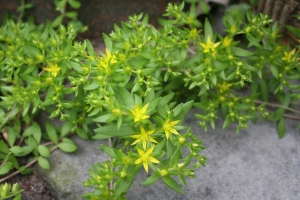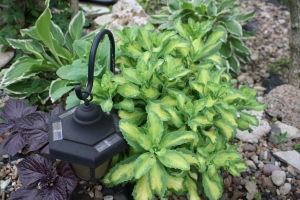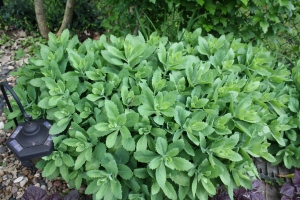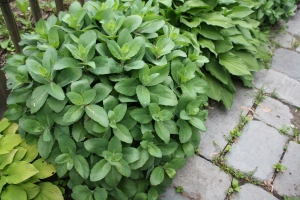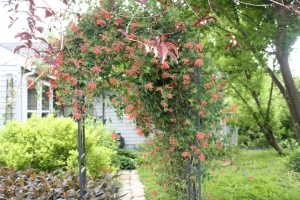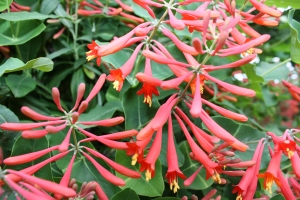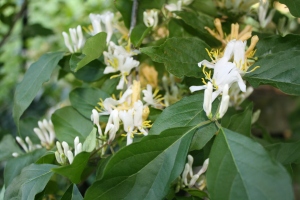First, the disclaimer….I’m not a rose person. I love them but am pitifully bad at growing them. I do, however, have several of the easiest-to-grow varieties, although they all seem to look very much alike probably because I tend to gravitate to the red ones.

 This floribunda, that easiest-to-grow of the traditional rose varieties, has flourished in the same spot in my back yard for many years. I have been lucky enough to avoid the aphid/beetle/mold problems that so many of my gardening friends bemoan — due to no special expertise on my part. When I see evidence of pest damage anywhere in the garden, I tend to take a one-size-fits-all approach with a homemade mixture of dish soap, neem oil, sesame oil, and warm water. If, after a good dousing with that, the bugs come back I tend to let them dine in peace.
This floribunda, that easiest-to-grow of the traditional rose varieties, has flourished in the same spot in my back yard for many years. I have been lucky enough to avoid the aphid/beetle/mold problems that so many of my gardening friends bemoan — due to no special expertise on my part. When I see evidence of pest damage anywhere in the garden, I tend to take a one-size-fits-all approach with a homemade mixture of dish soap, neem oil, sesame oil, and warm water. If, after a good dousing with that, the bugs come back I tend to let them dine in peace.
 This little ‘flower carpet’ rose has been moved from place to place several times;l I think I finally have found the place where it will thrive. The primary difference between this and the floribunda above is that this one tends to spread out rather than up.
This little ‘flower carpet’ rose has been moved from place to place several times;l I think I finally have found the place where it will thrive. The primary difference between this and the floribunda above is that this one tends to spread out rather than up.
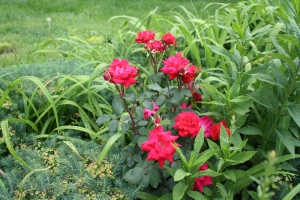
 The ‘knockout’ roses that line the front walkway, now in their third season, still are very small. I’ve cut them back pretty severely each year to encourage them to bush out. Their name implies that they’re pretty hardy, and since in their young lives they’ve already survived heavy storms, drought, and me, the name seems appropriate.
The ‘knockout’ roses that line the front walkway, now in their third season, still are very small. I’ve cut them back pretty severely each year to encourage them to bush out. Their name implies that they’re pretty hardy, and since in their young lives they’ve already survived heavy storms, drought, and me, the name seems appropriate.
At this point I’m feeling so smug about my success with roses that I might consider moving up the degree-of-difficulty scale and try adding a ‘grandiflora’ variety. I might even try another color.
